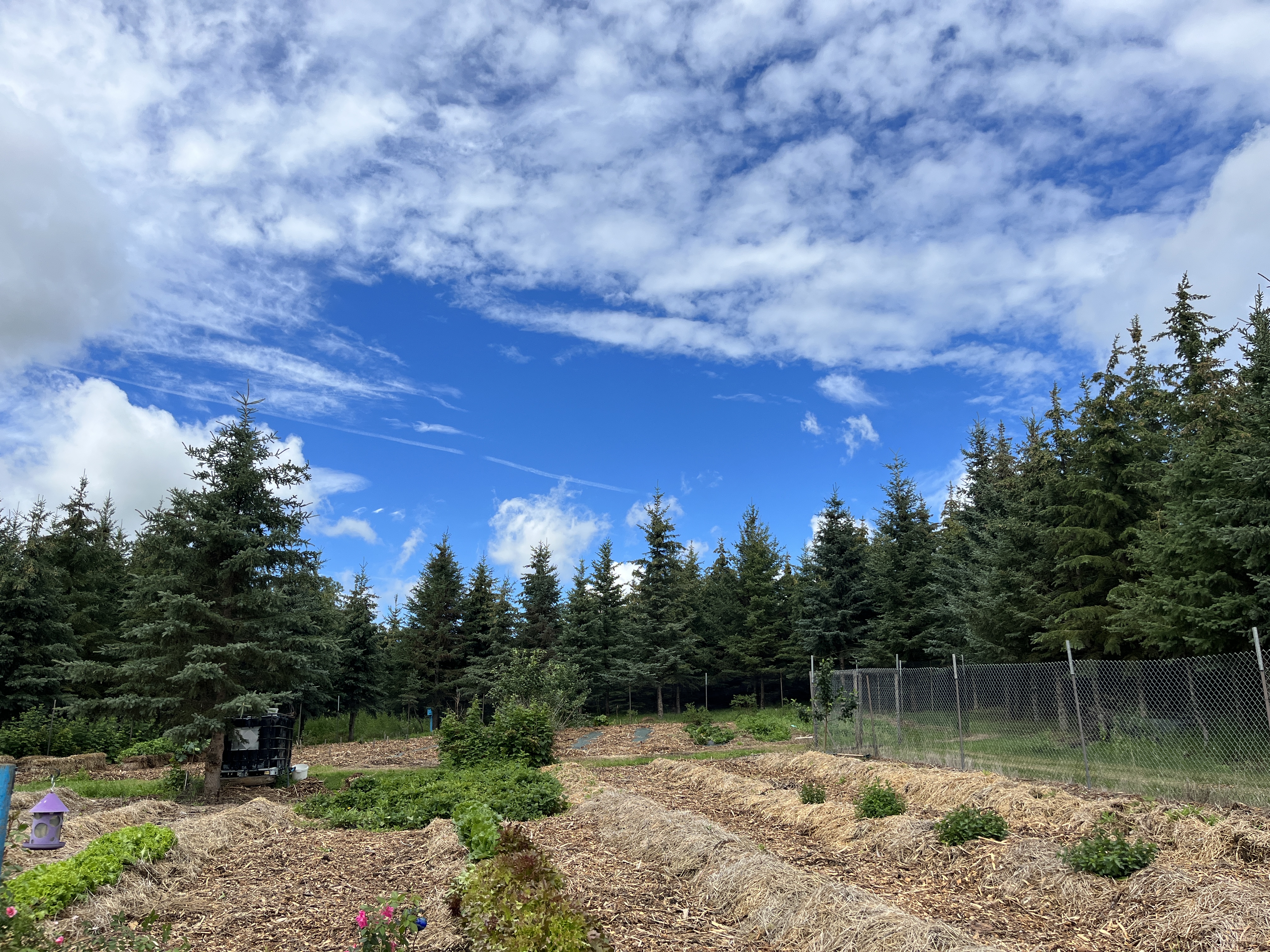
The pros and cons of no till gardening
No till gardening is a system of gardening where the soil is mulched to prevent soil erosion, conserve water and reduce weeds. As with anything, there are pros and cons to the no till system of gardening.
The pros and cons of no till gardening
Conventional vegetable gardening
Tilling soil has been a conventional home gardening practice ever since the invention of the rototiller in the 1940’s.Tilling damages the soil in several significant ways: rototillers ruin soil structure by pulverizing, tilling compacts soil, and digging and tilling exposes soil biota (microbial life) to air and heat which kills them. Healthy soil is full of microbial life which are important for the uptake of nutrients by plant roots.
However, soil science research in the middle of the last century taught us a lot about maintaining healthy soil and led to the practice of no or low-till agriculture. The “dust bowl” of the 1930’s in the plains of north America was the direct result of tilled soil that was eroded by wind during and after a drought. There have been worse droughts since the 1930’s, but because of no-till agriculture, dust bowls are history.
Most farmers have stopped tilling and leave stubble on fields (comparable to using mulch in a no-till vegetable garden) since the 1970’s. This knowledge is only now slowly creeping into home gardening with the practice of no-till vegetable gardening. But, as we all know, change is hard.
Getting past change
It can be very difficult for home gardeners to convert to no-till. Tilling has been “what you do” and is still recommended in many books, magazines, and Internet sites. Many gardeners feel that garden soil needs to soft to plant and that tilling is the only way to get organic matter into soil, both of which are false. Some just like the look and smell of freshly tilled black soil, because that is what we grew up with. It’s also very difficult to change a practice that you learned from an elder, parent or grandparent – someone you value and respect – so there can be a real feeling of emotional discomfort in changing to no-till.
Advantages
No till vegetable gardening improves soil texture, retains moisture and reduces the need to water, nurtures abundant microbial life important to the uptake of nutrients by roots and best of all, reduces weeding to almost nothing. No till promotes a healthy garden ecosytem with far fewer insect and disease problems. It takes some planning and work to set up a no-till vegetable garden, but the payoff is in increased yields, less watering and virtually no weeding.
If you feel unsure about no-till, try converting one small area of your garden to test it out.
Disadvantages
Mulched soil takes longer to warm up in spring than bare soil. This can be a hindrance if your garden space is in a shady part of your yard, so you may have to plant slightly later than usual so that seeds germinate.
No till can look messy especially if straw is used for mulch. In urban areas, arborist wood chips looks tidy. However, mulch is hidden once plants mature, so this is only an issue at the beginning and end of a season.
In high wind locations, straw can blow easily. To prevent this, water the soil deeply and then water again after the mulch is placed down. Wet straw mulch will settle and remain in place after a few rainfalls. Courser arborist wood chips may be a better choice in high wind locations.
Straw mulch can be very messy. It clings, gets in shoes and pant legs, it can poke and scratch so there may be some extra clean up with straw. To reduce this, use straw on rows and wood chips in your pathways. If you have mold or dust allergies, wear a mask while working with mulch or simply choose another mulch like wood chips to avoid allergic reactions.
It can be difficult to find mulch in some areas like the far north or forested regions where straw is not produced. In this case, mulch choices will be very limited.
It can be hard to convert to no till if your soil is very damaged or has heavy clay. In this case, add up to 4” of compost on top of the planting bed. No need to mix it in, simply cover with mulch. Top up with compost regularly and you will start to see an improvement in your soil over time. Another option for heavy clay or damaged soil is using framed raised beds.
A normal layer of mulch (4” – 6”) will prevent annual weed seeds from germinating. No landscape cloth underneath. Perennial weeds will grow through a normal layer of mulch. Instead, a thick mulch that is 12" deep or deeper, will smother perennial weeds if it is left in place long enough, usually one year. Once the area has been smothered, it’s important to thin the mulch to 4” – 6” before you plant a garden because thick mulch also prevents air penetration in the soil which is needed by roots.
Some types of mulch can attract slugs or mice. If your garden is in a wet or low-lying spot, avoid using leaves, grass clippings or straw as a mulch, which encourages wet conditions favorable to slugs. Mice will nest in nugget mulch, the kind that is composed of large nuggets of wood or bark. A better option is coarse arborist mulch which contains woody material of varying sizes. Ideally, you should be able to hold at least 20 individual pieces in your hand. If you can only hold 5 pieces, find a better mulch as mice will like this!

